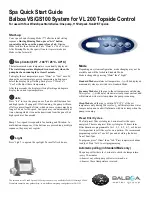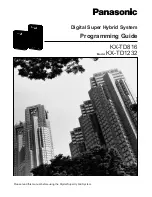
5
1033239B-5/30
HINT: Take a spin next to someone pulling your
trailer to glimpse the increased length and space
requirements that will soon be your responsibility. Get a
feel for the size of the matter as both bike and trailer roll
towards their shared destination, and then buy the kind
person pulling your trailer for you at least a few cold
beverages for their trouble.
Length Awareness In One Easy Step—Be Aware That It’s There!
Learn To Make Turns And Take The Bumps
It is a swell idea to familiarize yourself with how individual
loads effect the overall handling and performance of your
bicycle. If you make friends with “the enemy” so to speak,
then the battle has no choice but to be over. You will most
likely have to adjust your riding style from load to load and
it is always a good idea to take a test spin in a lightly
traveled, safe area to get a feel for how your bike will
perform under any circumstance which might arise.
To prevent unwanted damage to both
bike and trailer, avoid the Jack knife
syndrome that comes with exaggerated,
sharp turning. Always keep your turning
radius lower than 75
°
in the clockwise
direction and less than 80
°
in the
counter clockwise direction. The
BigTow was not designed to allow turns
of a tighter radius than this and such
turns exceed the restrictions placed on
the BigTow’s use.
Also, in off road
conditions, be aware
of your increased
length when
traversing deep
gullies and large
rocks.
Over-Rotational Overload as we like to call it, adversely affects the
attachment and control of the trailer and can result in damage to the bike,
the trailer and even the unwary rider.
It is possible to damage your BigTow or your derailleur if you over-rotate the
trailer. Make every possible effort to avoid such maneuvers but if you believe
you may have already over done it, examine your derailleur, your quick-
release and the BigTow hitch pins (page 9) to make sure they are still in
sound working order. If you are unsure as to whether you exceeded the
stated limits or have further questions, contact your local bike shop for
assistance.
Practice Makes Your Ride Perfect!
Three Great Ways to Park Your Bike and Trailer
You can also
disconnect your
BigTow from the
bike on a flat
surface. Use the
handy parking feet
to stand your trailer
independently the
while bike does its
own thing.
Simplicity says, find some
level ground and position your rig
parallel to a stable and trustworthy
structure (like a building or a fence).
Exact distance may vary, but with
the bike about a foot away, slowly
and gently lean the bike until it rests
against the surface of your trusted
structure. Double-check the bike
and trailer to ensure stability.
On a flat surface, turn
your bike 90
°
to the trailer
and your handlebars a
further 90
°
to the frame. The trailer will
stand on its own!
When you are ready to take off again, put
one hand on the handlebars and one on the
saddle. Straighten the bars, and walk
forward with your bike as you pull the seat
towards you. The trailer will straighten out and
you are ready to roll. This magic works best
with a fully loaded trailer.
Because of the BigTow’s lightweight, aerodynamic design
and precise tracking in the slipstream of your rolling
thunder carriage, it can be easy to forget that you are
cruising with a trailer in tow. It’s not that a little added
length is necessarily a bad thing, but always be well aware
that it’s there. Use the flag provided to let others know
where your space ends and theirs can effectively begin.






































